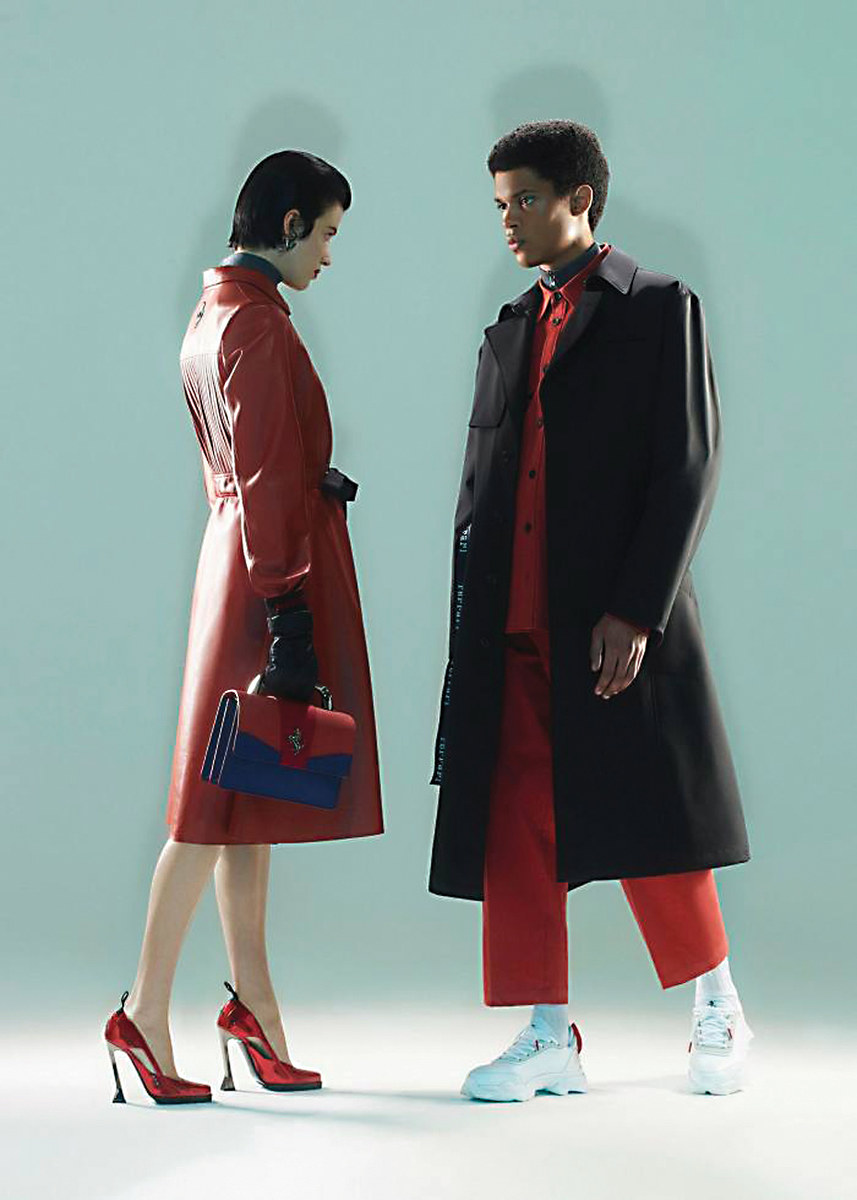MARANELLO, Italy: Ferrari is racing through the gears to bring its Prancing Horse brand to the catwalk and fine dining in an attempt to woo wealthy customers beyond its faithful fans.
The Italian company renowned for its Formula One racing team and high-powered sports cars adorned with the Cavallino Rampante logo is launching a fashion collection on Sunday and reopening a restaurant in its hometown of Maranello two days later.
The clothing line comes from creative director and former Armani designer Rocco Iannone while Michelin-starred Italian chef Massimo Bottura is relaunching the restaurant where founder Enzo Ferrari once dined with friends and Formula One stars.
Nicola Boari, Ferrari’s chief brand diversification officer, told Reuters the aim was to reach new clients “in terms of both age and culture” — beyond its racing fans and sports car clients who already covet its branded jackets, T-shirts and hats.

Ferrari’s new clothing collection. (Supplied)
The customer base for Ferrari’s cars is limited by design to under 10,000 vehicles a year — fewer clients than Bottura’s new restaurant could serve in the same time — and the luxury carmaker has said it hoped its so-called brand extension strategy would account for 10 percent of profits within a decade.
Ferrari is far from the first luxury car brand to venture into lifestyle businesses. Others like Volkswagen’s Lamborghini and Bentley, as well as US motorcycle maker Harley-Davidson, have turned to clothing collections.
Ferrari’s foray into haute cuisine too follows in the steps of luxury fashion groups, including France’s LVMH and Kering’s Gucci, which also turned to Bottura for its first restaurant in Florence and a second in Beverly Hills.
SPEEDREAD
The customer base for Ferrari’s cars is limited by design to under 10,000 vehicles a year — fewer clients than Bottura’s new restaurant could serve in the same time — and the luxury carmaker has said it hoped its so-called brand extension strategy would account for 10 percent of profits within a decade.
“Ferrari is one of the strongest brands in the world and definitely the strongest brand in the luxury industry,” said Massimo Pizzo of Brand Finance, a brand valuation consultancy. “It has the potential to succeed even in the luxury apparel industry,” he said.
Ferrari’s former chief executive Louis Camilleri unveiled the brand extension strategy, which includes fashion, restaurants and other luxury experiences, in 2019 just before the coronavirus pandemic struck and delayed the plans.
The launch now comes days after the appointment of new Chief Executive Benedetto Vigna, a 52-year-old physicist who has spent 26 years at semiconductor maker STMicroelectronics and is expected to drive Ferrari into the era of electric cars.
Camilleri said Ferrari’s brand spin-offs were too stretched and planned to cut about half of the carmaker’s license agreements and trim some 30 percent of its product categories.
Perfumes have since disappeared from the shelves of Ferrari’s existing stores, for example, as have some low-end products with no real value beyond the logo.
Analysts said it would take time for Ferrari’s new brand strategy to succeed, while some were cautious about its potential contribution to profitability.
“Given the kind of scale you need to be profitable in luxury, I don’t think this will be accretive to Ferrari’s margins, which are quite high already,” said Susy Tibaldi, luxury analyst at Swiss bank UBS.
Last year, 11.3 percent of Ferrari’s net revenue came from its sponsorship, commercial and brand category — which includes the Formula One team and revenue generated by the brand through merchandising, licensing and royalties — down from 14.3 percent in 2019.













